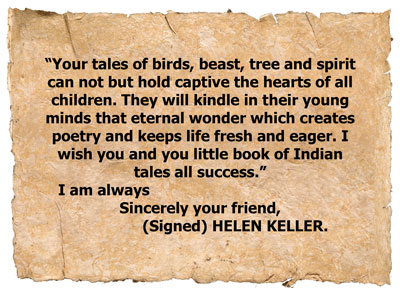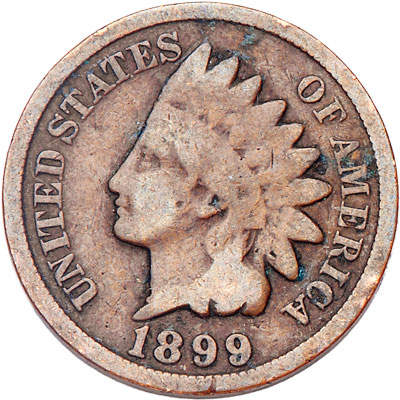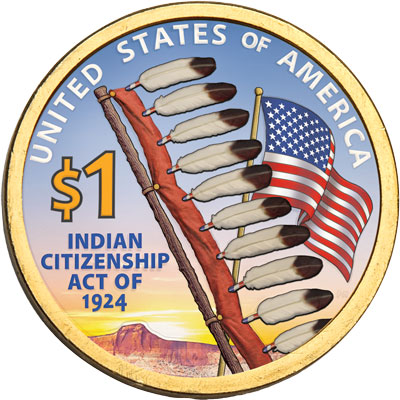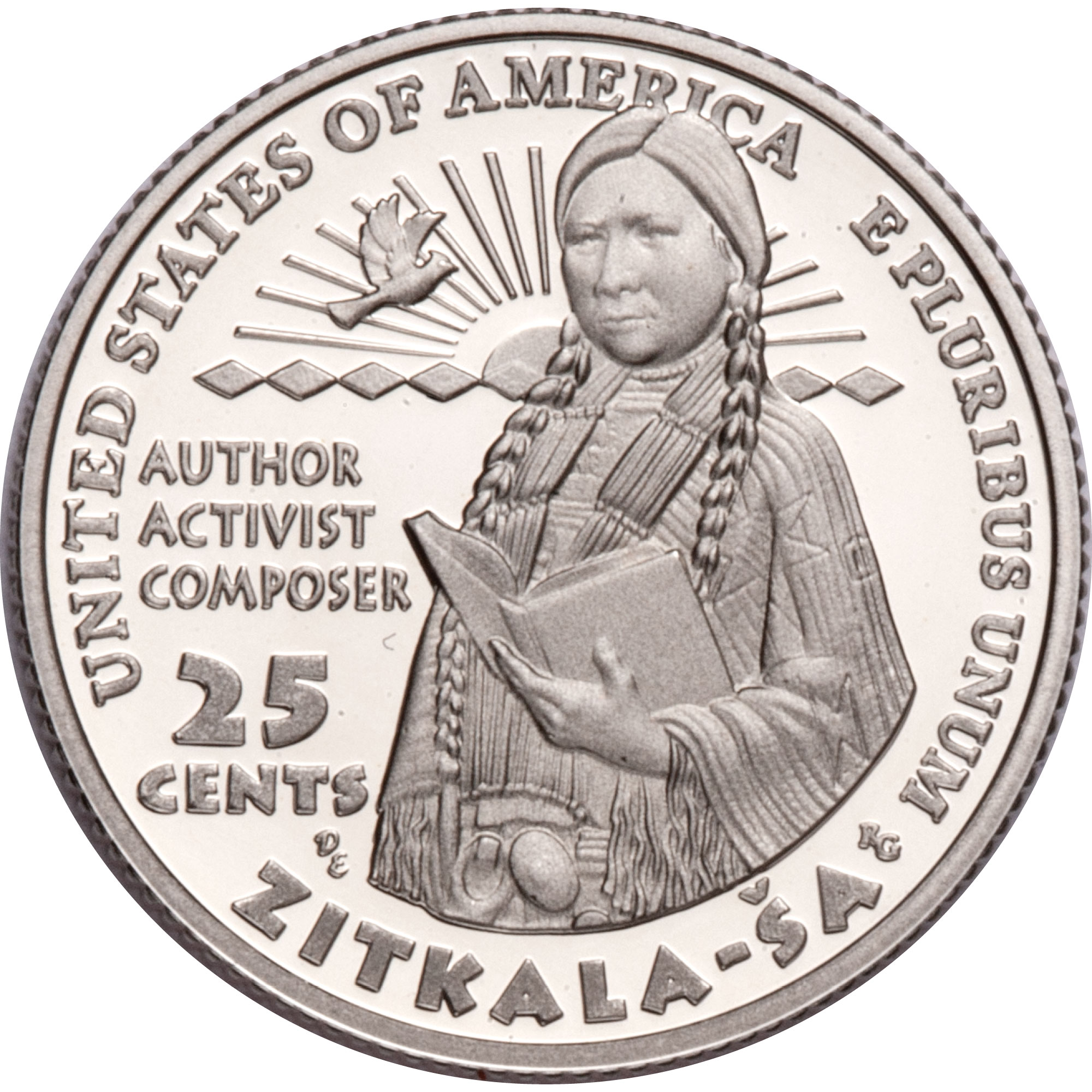Culture Clash Leads to Change
Right place. Right time. Right skills. It’s the trifecta for success. Yankton Sioux Zitkala-Ša had all three – and more – for a Congressional push needed to grant Native Americans U.S. citizenship. Find out why else she’s honored on a U.S. Women quarter.
Navigating Cultures
Recognize 21st century slang such as a mash-up or hyphenate Americans? As the 19th century rolled into the 20th, Zitkala-Ša navigated the opposite – assimilation. Born in 1876 of a Nakota Sioux mother and a fur-trading father of European descent, Zitkala-Ša (zit-KAH-la sha) spent her early years surrounded by her maternal heritage.
Her birth during America’s celebratory centennial year came 25 years after Congress had passed the Indian Appropriations Act creating a residential system for Indigenous Peoples. The biracial baby was born on the Yankton Indian Reservation in Charles Mix County, South Dakota.
Then came Zitkala-Ša’s assimilation as Gertrude Simmons. It occurred at White’s Indiana Manual Labor Institute in Wabash, IN. The boarding school had, in 1882, received federal funds to assimilate and educate Native American children. Two years later, Quaker missionaries visiting the Yankton reservation persuaded Zitkala-Ša’s mother to let her eight-year-old daughter go. What also would go was her Sioux name for Red Bird.
Gertrude “was conflicted about the experience, and wrote both of her great joy in learning to read and write and to play the violin, as well as her deep grief and pain of losing her heritage by being forced to pray as a Quaker and cut her hair,” according to the National Park Service. The clash of cultures continued for Gertrude Simmons as she attended Earlham College, also in Indiana, and the New England Conservatory of Music in Boston.
Published accounts about her challenges started around 1900. They included bylines as Zitkala-Ša in such nationally recognized political magazines as The Atlantic and Harper’s. Eventually, her essays, short stories and retelling of Sioux legends led to books. Also honored on a U.S. Women quarter, fellow suffragist Nina Otero-Warren would compile a similarly written record; hers was on New Mexico’s Spanish descendants and Indigenous Peoples titled Old Spain in Our Southwest. Zitkala-Ša’s 1921 edition of Old Indian Legends included an insightful letter from fellow activist Helen Keller:

What Was the ‘Indianist Movement’?
A return to the Northern Plains led to a clerking job at the Bureau of Indian Affairs (BIA). The regional office was on the Standing Rock Indian Reservation that straddles North and South Dakota. There, in 1902, Gertrude Simmons married RaymondTalephause Bonnin, who also was of mixed Sioux lineage. The BIA then moved the couple to the Uintah and Ouray Reservation in Vernal, UT, about 120 miles east of Provo.

During this period of U.S. cultural history, classical composers were looking for ways to incorporate Native American musical tropes with Western music principles. Dubbed the ‘Indianist Movement’, the goal was to create a new national sound. The movement’s existence from 1880 to 1920 loosely coincided with Indian motifs struck on coins by the U.S. Mint, including the popular Indian Head Cent.
In Vernal, Gertrude S. Bonnin met music professor William F. Hanson, a son of Danish immigrants who grew up playing with Ute and Sioux children from the reservation. Recognizing that opera could provide her with a wider audience for sharing not only Sioux stories, but also its songs and dances, Gertrude made the decision to collaborate.
For a plot, she chose a love triangle between Sioux and Shoshone characters. The backdrop? The sacred – yet federally banned – Plains Indian ceremony known as the Sun Dance. It’s a ritual observed over several days of fasting, drumming and dancing around a central pole and in the heat of the sun while the community prays for healing. Note: The ban was lifted in 1934.
The Sun Dance Opera premiered in 1913. It was performed again in 1914, 1935 and on Broadway in 1938, the year Gertrude S. Bonnin died.* Unfortunately, there are no known recordings of any of these productions. Fast forward to the vinyl era which made music recordings easier. Honored on another U.S. Women quarter, Hawaii-born Edith Kanaka’ole preserved Polynesian culture on a 1979 album of old and new chants, Hi`ipoi I Ka `Aina Aloha (Cherish the Beloved Land).
Getting the Indian Citizenship Act Passed
When she graduated from high school in 1895, Gertrude Simmons gave her first known public speech, advocating for women’s rights. It would not be her last. Nor were her topics restricted to women’s issues.
But it likely was her involvement with fellow suffragists and their state-by-state push for passage of the 19th Amendment that provided first-hand experience on getting legislation before Congress. Her goal? A federal statue granting Native Americans U.S. citizenship.
In the 19th century, Indigenous Peoples could only apply for citizenship by giving up their tribal affiliations when they enlisted for U.S. military service or when they accepted land allotments as the federal government carved up tribal lands under the 1887 Dawes Severalty Act.
Shortly before the U.S. entered WWI, Gertrude and Raymond Bonnin moved to Washington, D.C. Her husband enlisted with the U.S. Army, rising to the rank of captain in the Quartermaster Corps. Gertrude became the Society of American Indians’ secretary and editor of its American Indian Magazine. When Congress ratified the 19th Amendment in 1920, Gertrude redoubled her lobbying efforts to get U.S. citizenship status for Native Americans.

Chairing the Committee on Indian Affairs, New York Congressman Homer P. Snyder wound up successfully championing the 1924 legislation through Congress. Some 125,000 of the 300,000 Native Americans estimated alive in 1924 became U.S. citizens while retaining their respective tribal affiliations. The U.S. Mint celebrated the 100th anniversary of the act’s passage on the 2024 Native American golden dollar reverse, seen here colorized by Littleton’s artists.
Also in 2024, and in honor of her Yankton Sioux heritage, the mint issued a U.S. Women quarter featuring her birth name Zitkala-Ša, a bird to symbolize her name, a stylized sun to denote her opera, with a Yankton Sioux-inspired diamond pattern underneath the sun. She is featured in traditional Yankton Sioux dress, holding a book to represent her published works. The 15th in U.S. Women’s Quarter series, it was designed by Don Everhart of the U.S. Mint’s Artistic Infusion Program and sculpted by Medallic Artist Renata Gordon.
By the time this series officially ends in 2025, there will be 20 quarters total honoring the achievements of American women. Which ones caught your attention this year?
*Gertrude Simmons Bonnin and her husband, Captain Raymond T. Bonnin, are buried in Arlington National Cemetery.
SOURCES
Delaney, Michelle. “Insights: A View into Two Worlds.” American Indian Magazine, Spring 2022, Vol. 23. No. 1. https://www.americanindianmagazine.org/story/zitkala-sa
Herzog, Kristin. “Gertrude Bonnin (Zitkala-Sa) (Sioux) (1876-1938).” Georgetown University. Accessed August 12, 2024. https://faculty.georgetown.edu/bassr/heath/syllabuild/iguide/bonnin.html#:~:text=Major%20Themes%2C%20Historical%20Perspectives%2C%20and,Native%20American%20religion%20and%20Christianity
Lamberson, Nicole. “Zitkála-Šá: On Creativity, Copyright, and Cultural Empowerment.” March 31, 2021. https://blogs.loc.gov/copyright/2021/03/zitkla-on-creativity-copyright-and-cultural-empowerment/
Library of Congress. “Today in History – June 2: Indian Citizenship Act.” Accessed August 13, 2024. https://www.loc.gov/item/today-in-history/june-02/
Mathias, Marisa. “Zitkala-Sa (“Red Bird”/Gertrude Simmons Bonnin) 1876-1938.” National Women’s History Museum. https://www.womenshistory.org/education-resources/biographies/zitkala-sa
New York Historical Society Museum & Library. Women and the American Story. “Life Story: Zitkala-Sa, aka Gertrude Simmons Bonnin (1876-1938): Fighting for the Rights of Indigenous People.” Accessed August 16, 2024. https://wams.nyhistory.org/modernizing-america/xenophobia-and-racism/zitkala-sa/#:~:text=While%20working%20at%20the%20Bureau,Sa%20worked%20as%20a%20teacher.
Shanley, Kathryn W. “Native American Literature.” Accessed August 12, 2024. http://plainshumanities.unl.edu/encyclopedia/doc/egp.lt.050#:~:text=The%20written%20Native%20American%20literary,Paul%2C%20an%20Indian%20in%201772.
“This Week in 19th Amendment History: The Death of Zitkála-Šá.” Arlington Public Library. January 28, 2020. https://library.arlingtonva.us/2020/01/28/this-week-in-19th-amendment-history-the-death-of-zitkala-sa/
Tousley, Mitch. “Zitkala-Sa and the Sun Dance Opera: A Forgotten Legacy.” Provo Music Magazine, March 28, 2014. https://provomusicmagazine.com/2024/03/28/zitkala-sa-and-the-sun-dance-opera-a-forgotten-local-legacy/
U.S. National Park Service. “The Dawes Act (General Allotment Act).” Accessed August 16, 2024. https://www.nps.gov/articles/000/dawes-act.htm#:~:text=The%20Dawes%20Act%20(sometimes%20called,to%20break%20up%20tribal%20lands.
U.S. National Park Service. “Zitkala-Ša (Red Bird / Gertrude Simmons Bonnin).” Accessed August 14, 2024. https://www.nps.gov/people/zitkala-sa.htm




